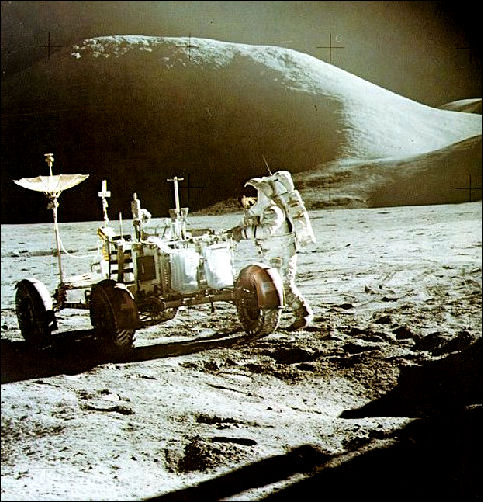
|
|
Vistas without parallel in human experience surrounded
the crews on the great voyages of exploration.
Mount Hadley, rising 2 3/4 miles above the plain,
is Apollo 15's backdrop as Jim Irwin sets up the first
Lunar Roving Vehicle on the Moon.
(Photo captions for this chapter by the author.) |



